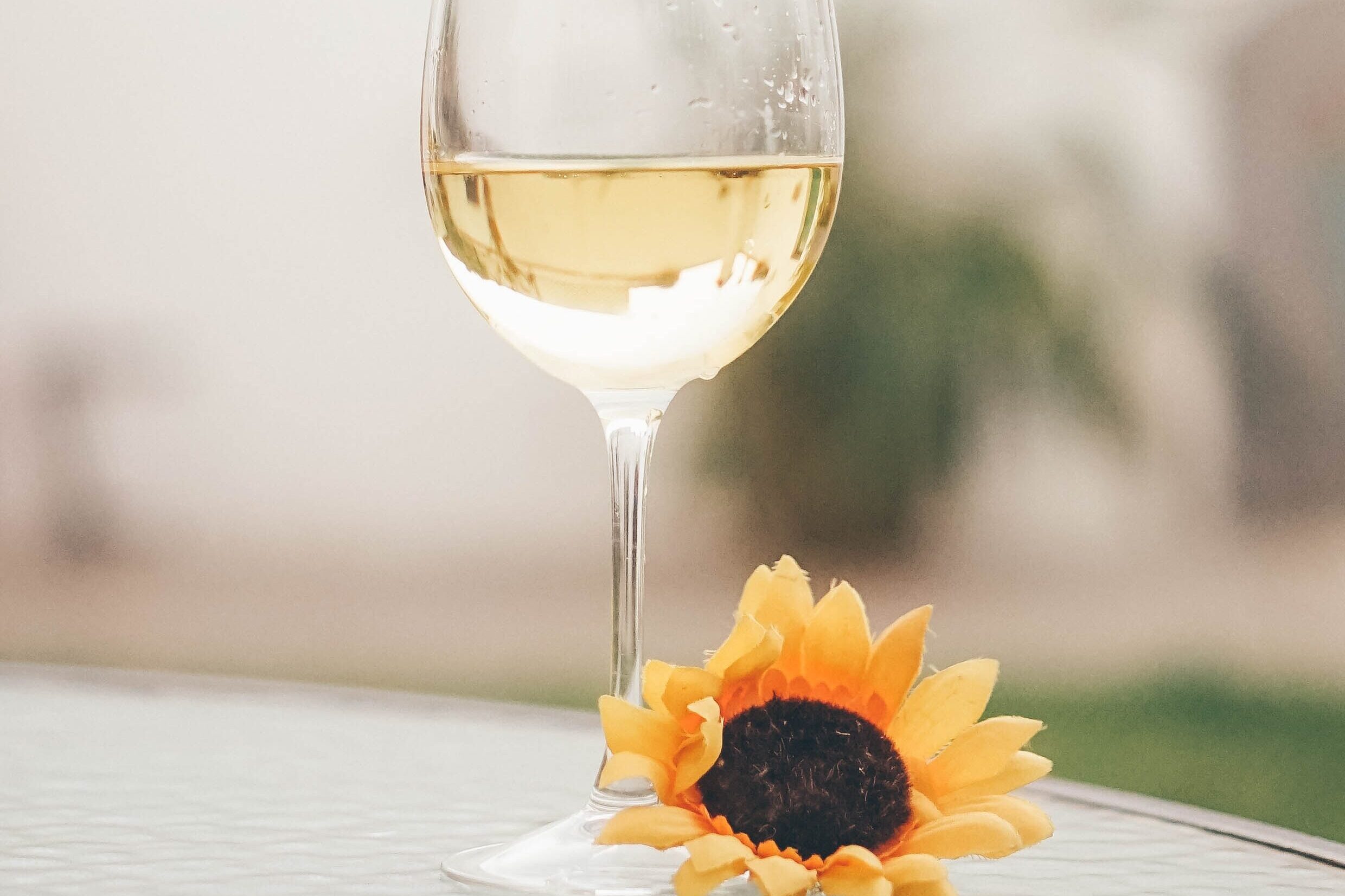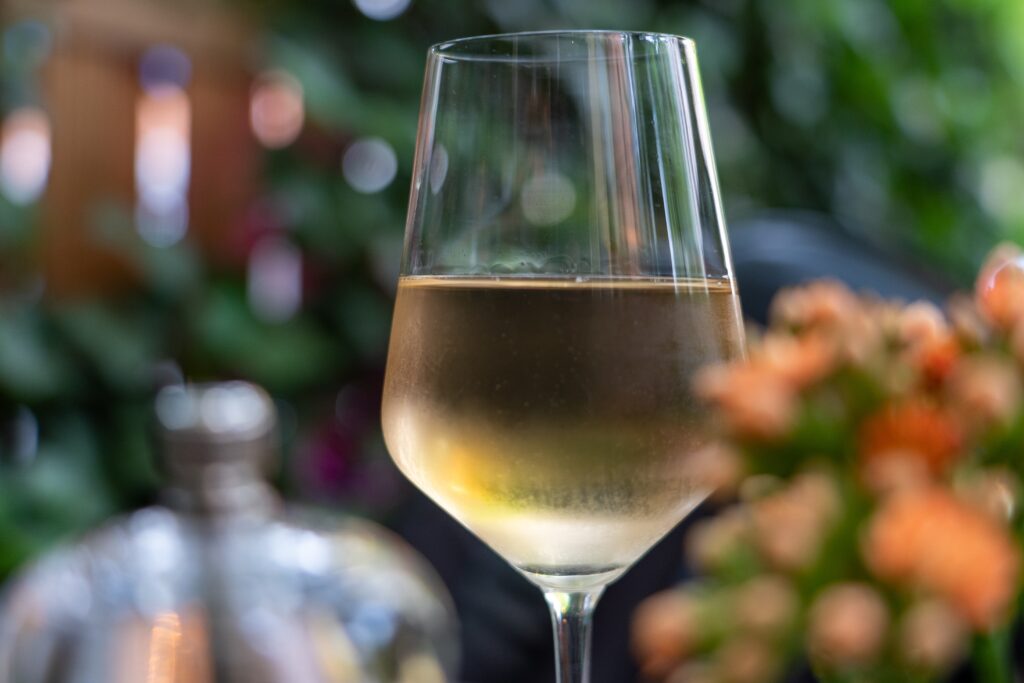If all wines have aroma, doesn’t that mean all wines are aromatic? Technically yes, but a select few wines (mostly white) possess an unreal floral and/or fruity aroma. These wines have the potential to send you back in time to snacking on orange candies or getting a noseful of fresh roses. They’re the aromatic white wines.
In this post, I’ll break down the different types of aromatic wines, how they got their name, pairing recommendations and serving tips!

What are aromatic white wines?
Aromatic white wines are wines that have an aromatic compound that is found both naturally in flowers and grapes. Some grapes have more than others, giving them a powerful floral and citrus aroma. This compound is known as terpenes, or more specifically, the sub-group known as monoterpenes.
These wines have very citrusy aromas like lime, lemon, orange, or grapefruit and floral aromas like roses and orange blossoms.
Depending on the wine, aromatic white wines can be made at any sweetness level, and they tend to do well as semi-sweet or off-dry wines, like Riesling and Gewürztraminer. There are a few exceptions, such as Albariño and Sauvignon Blanc, which are generally always made bone-dry.
Craving more on how sugar in wine works? Read about that here.
While undoubtedly powerful, these wines are delicate and can easily be overworked. Winemakers take precautions to preserve these elegant fragrances through stainless steel fermenting, little-to-no new oak aging, cold-fermenting, or extra lees contact.

Types of aromatic white wines
Depending on your source (or how nerdy you want to get), there are anywhere from 10-15 commonly found aromatic white wines. Here’s a quick breakdown:
Gewürztraminer: Rose, lychee, peach
Riesling: Lime, honey, green apple
Sauvignon Blanc: Grass, lime, lemon
Viognier: Peach, honeysuckle, apricots
Muscat: Orange, grapefruit, orange blossom
Torrontés: Rose, lemon zest, peach
Albariño: Lime, grapefruit
Müller-Thurgau: Rose, peach, pear
Pinot Gris: Lime, lemon, melon, peaches

Tips for serving
Aromatic white wines can be served similarly to most white wines, chilled at around 45°-50°F. That said, I personally prefer certain fragrant wines at a slightly warmer temperature. This allows the wine to “open” and reveal more fragrance and flavor.
I tend to pour my glass straight from the fridge, then let it sit for five minutes or so, and that usually does the trick.
Food pairing
Aromatic wines are some of the most fun wines to pair because they’re a bit of a rulebreaker. They’re often paired best with your more “unconventional” cuisines, like Thai, Indian, or sushi, and are paired more based on the sauce and flavor components than the protein.
If the dish is spicy or heavily seasoned, it should be paired with a semi-sweet wine to balance and enhance the food. On the other hand, if the dish has a lot of acid, it should be paired with a wine with more acid. That way, the wine doesn’t get lost in the shuffle.
Here are a few of my personal favorite aromatic white wine and food pairings:
- Off-dry Riesling & pad prik king (spicy Thai curry)
- Pinot Gris & sushi
- Chenin Blanc & shrimp scampi
- Albariño & oysters
- Grüner Veltliner & butter chicken
- Sauvignon Blanc & green curry
A “non-aromatic” white wine has fewer terpenes and, therefore, a less delicate flavor and aroma. Chardonnay and Grenache Blanc are good examples since they tend to have a stronger flavor profile than most white wines.


